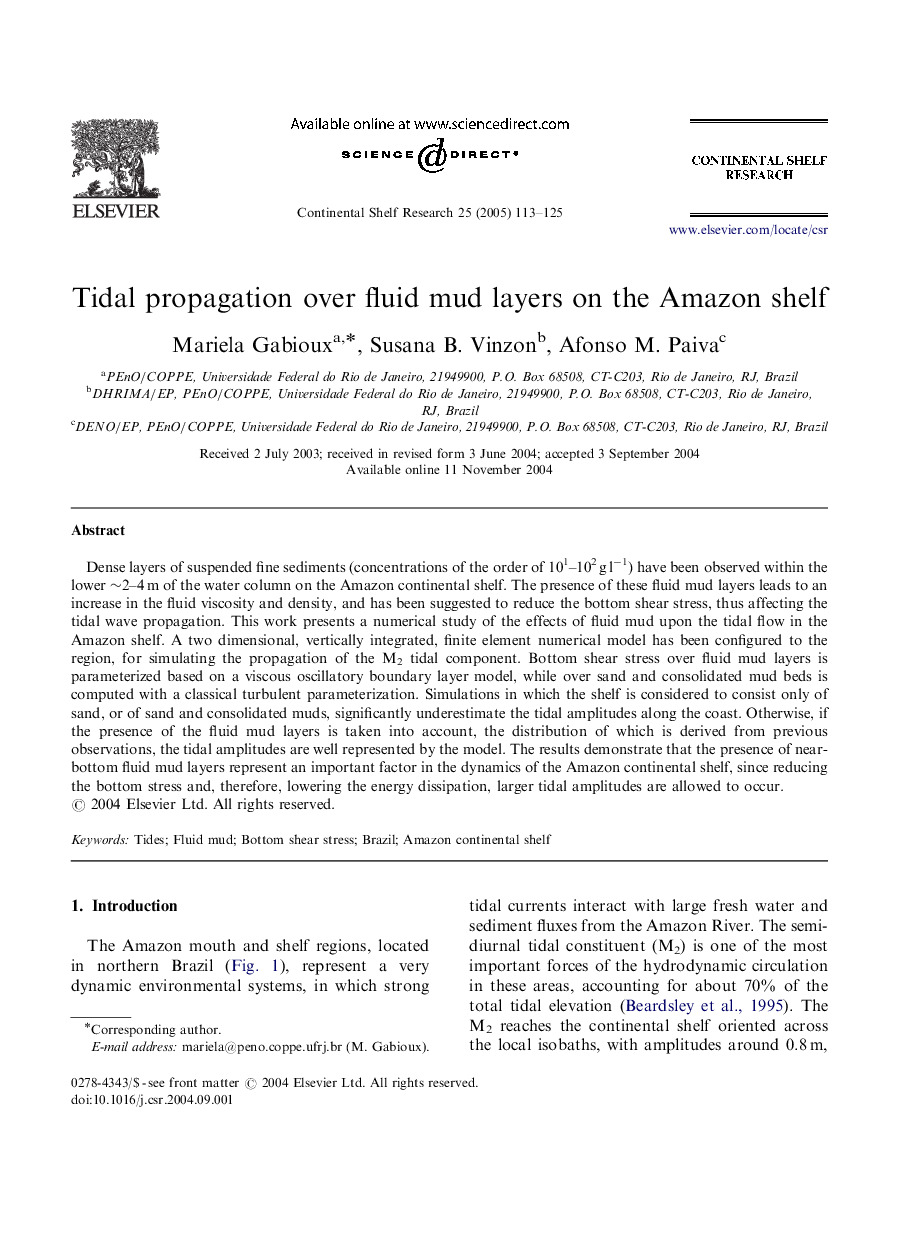| Article ID | Journal | Published Year | Pages | File Type |
|---|---|---|---|---|
| 9479337 | Continental Shelf Research | 2005 | 13 Pages |
Abstract
Dense layers of suspended fine sediments (concentrations of the order of 101-102 g lâ1) have been observed within the lower â¼2-4 m of the water column on the Amazon continental shelf. The presence of these fluid mud layers leads to an increase in the fluid viscosity and density, and has been suggested to reduce the bottom shear stress, thus affecting the tidal wave propagation. This work presents a numerical study of the effects of fluid mud upon the tidal flow in the Amazon shelf. A two dimensional, vertically integrated, finite element numerical model has been configured to the region, for simulating the propagation of the M2 tidal component. Bottom shear stress over fluid mud layers is parameterized based on a viscous oscillatory boundary layer model, while over sand and consolidated mud beds is computed with a classical turbulent parameterization. Simulations in which the shelf is considered to consist only of sand, or of sand and consolidated muds, significantly underestimate the tidal amplitudes along the coast. Otherwise, if the presence of the fluid mud layers is taken into account, the distribution of which is derived from previous observations, the tidal amplitudes are well represented by the model. The results demonstrate that the presence of near-bottom fluid mud layers represent an important factor in the dynamics of the Amazon continental shelf, since reducing the bottom stress and, therefore, lowering the energy dissipation, larger tidal amplitudes are allowed to occur.
Related Topics
Physical Sciences and Engineering
Earth and Planetary Sciences
Geology
Authors
Mariela Gabioux, Susana B. Vinzon, Afonso M. Paiva,
